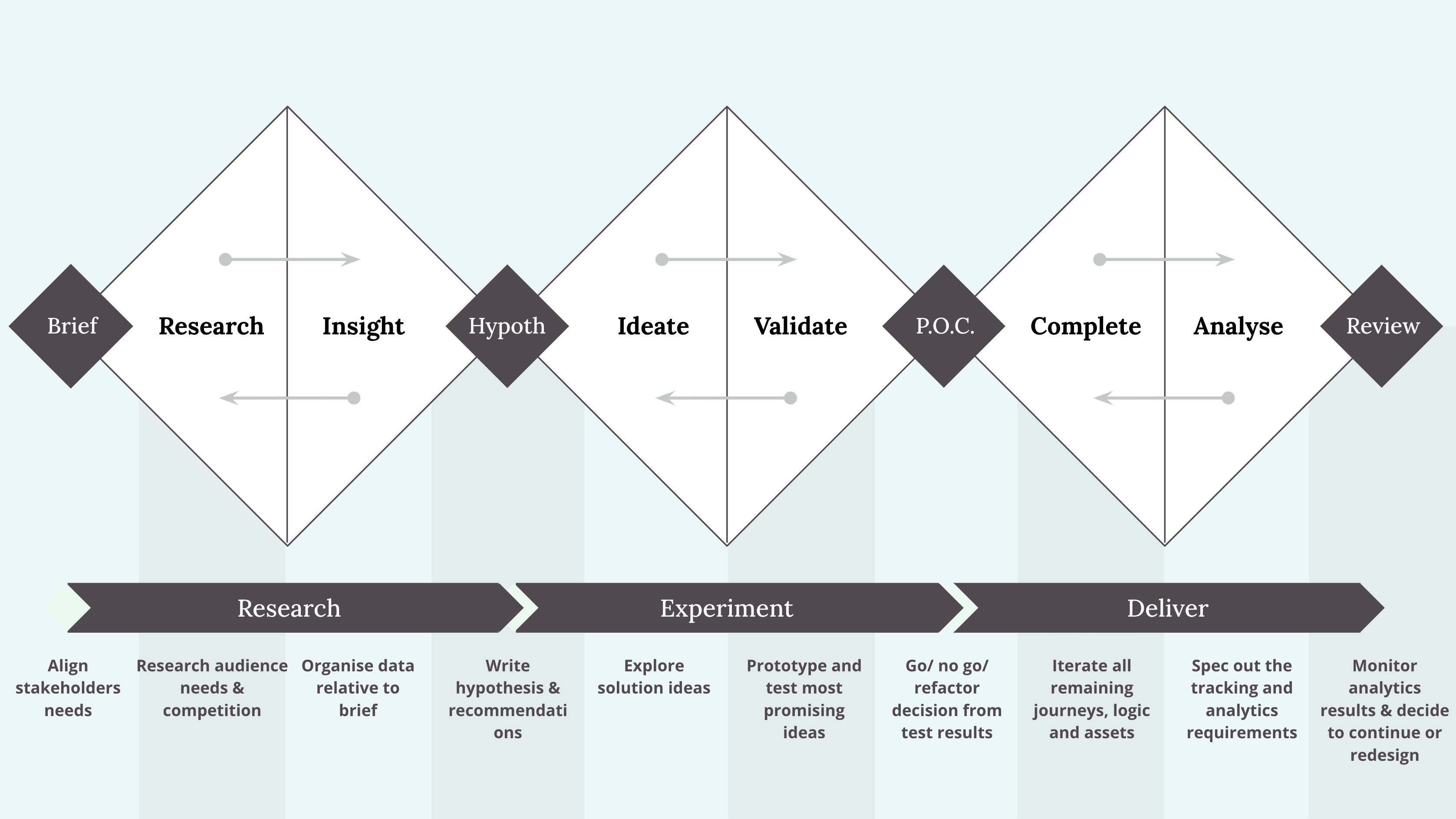Double Diamond Is Not How Most Companies Work
The “Double Diamond” process rarely works well in real projects. Here’s how the design work actually gets done in small and large organizations, and where design has most leverage.
Do you actually rely on the well-established Double Diamond process in your design work? Chances are high that you had to cut corners, make tough compromises and keep convincing stakeholders about the right approach to design.
Is there a single, universal, perfect design process? Of course not. But we can try to improve our existing process to better accommodate the complexity and messiness of the world around us. Let’s see how.

Improving Double Diamond Design Process, a wonderful article on a more realistic design framework, by Andy Budd. Large view.
The reason why Double Diamond often fails is simple: too often Double Diamond doesn’t work well in practice. In fact, Andy Budd has shared a more realistic and honest overview of how the work actually gets done in real-life and where design has most leverage.
Design Process In Real-Life #
✅ Stakeholders rarely want you to think outside of the box.
✅ They want a cost-effective implementation of their idea.
✅ Discovery is for finding evidence to back up assertions.
✅ Direction is often chosen before design work happens.
✅ Double Diamond works in theory, but not in practice.
✅ Most companies work with a Reverse Double Diamond.
✅ You accept the work, monitor it, improve it post-launch.
✅ Once it’s launched, gather evidence, iterate, test, refine.
Double Diamond Is Often Not Enough #
Personally, I don’t think that Double Diamond is irrelevant or obsolete. Just as Andy writes, it’s a wonderful concept that helps designers avoid shallow solutions, understand the problem space well and then come up with creative solutions that actually address the problems that customers are facing.
However, too often it’s not enough — and it’s not quite how companies work. Companies often rush to the market to launch something quickly — and Double Diamond is seen at best as unnecessary friction, and at worst as an absolute waste of time.
And as a designer, I don’t want to waste anybody’s time. So before designing a single pixel on the screen, I need to be absolutely certain that I’m designing something that has been tested with actual users and shows promise to reach the impact that we are aiming for.
Meet The “Triple Diamond Process” #
I need to test hypotheses, to experiment back and forth, to refine and adjust and discard and reinvent the wheel if needed. And too often, “Double Diamond” doesn’t provide enough space and time to do that. So my design workflow seems to be closer to what Adam Gray describes as the “Triple Diamond Process”.

Why double diamond isn’t enough, focusing on the missing diamond — experimentation and testing. By Adam Gray. Large view.
As we iterate with hypotheses, we test them meticulously — with tree testing, Kano model surveys, low-fidelity protoypes and interviews with users and stakeholders. Once we have evidence that shows a positive trajectory, we start build a proof of concept, and evolve from there.
As design gets refined and adjusted, we keep testing continuously, with business requirements and user insights informing and guiding design decisions. No decision should be random, or a matter of preference — and there is always enough data to back up and defend design decisions.
Wrapping Up #
You always need allies to carry your design in action. Opposing the existing process is an uphill battle. So frame the task at hand as a design challenge, and explore how to deliver most value for users and business. Measure its impact, refine and post-launch.
You might be surprised by how quickly you might find the support you need to turn the process all around and start designing the right thing, the right way.
You can find more details on design patterns and UX in the video library on Smart Interface Design Patterns — with a live UX training that’s coming up in March 2024.
Useful Resources #
- Improving The Double Diamond Process, by Andy Budd
- How To Apply Double Diamond From Scratch, by Dan Nessler
- Why Double Diamond Isn’t Enough, by Adam Gray
- The Best Handoff Is No Handoff, by Vitaly Friedman
- Design’s Mid-Life Crisis (talk, 35 mins), by Andy Budd
- The Illusion of Different Design Processes, by Maximilian Schmidt
- Double Diamond Process at Doodle, by Stephanie Leue



